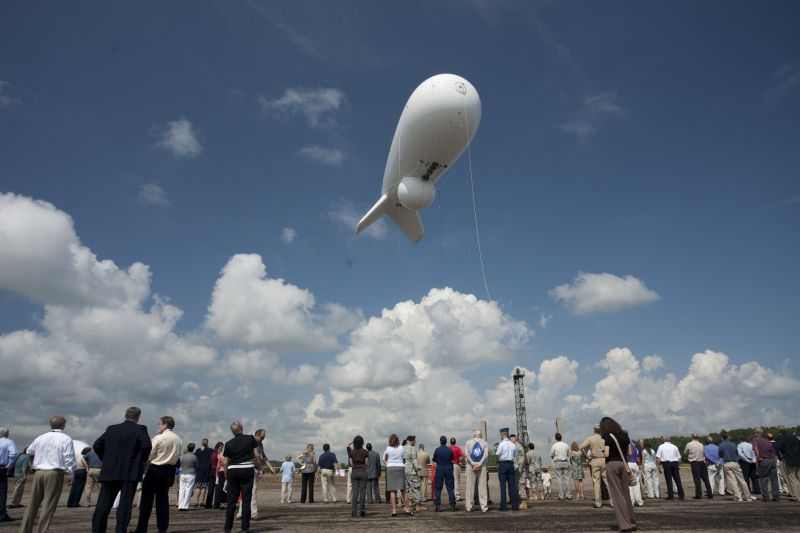Elevated system detects, tracks ascent-phase ballistic missiles during recent test
Enemy tactical ballistic missiles may soon be easier to detect and track. During a series of recent tests, a Raytheon Company (NYSE: RTN) JLENS demonstrated tactical ballistic missile defense (TBMD) capability when it detected and tracked a total of four ballistic-missile surrogates during their ascent (boost) phase.
During the test, the JLENS X-Band radar tracked two ripple-fired and two individually fired ballistic-missile surrogates. The missiles flew flight profiles similar to the profiles enemy tactical ballistic missiles might fly in high-threat regions of the globe.
“Along with other systems in Raytheon’s family of X-Band radars, JLENS can provide a robust early warning and tracking capability against ballistic missiles,” said David Gulla, vice president of Global Integrated Sensors for Raytheon’s Integrated Defense Systems business. “This TBMD demonstration and JLENS’ other recent successes prove that the system is ready to deploy for a combatant commander operational evaluation.”
JLENS demonstrated its capability against cruise missiles when it enabled Patriot and Standard Missile-6 intercepts of cruise-missile surrogates during separate tests. JLENS also completed two developmental tests and demonstrated its ability to stay aloft for long durations.
“JLENS’ TBMD capability gives combatant commands another tool they can use to help protect the U.S., deployed forces, our allies and friends from the growing ballistic missile threat,” said Dean Barten, the U.S. Army’s JLENS program manager. “JLENS’ TBMD capability, when coupled with its ability to conduct 360-degree long-range surveillance capability and simultaneously detect and engage threats like swarming boats and anti-ship cruise missiles from up to 340 miles away, gives commanders a powerful proven capability.”
JLENS, an elevated, persistent over-the-horizon sensor system, uses a powerful integrated radar system to detect, track and target a variety of threats. This capability better enables commanders to defend against threats including hostile cruise missiles; low-flying manned and unmanned aircraft; and moving surface vehicles such as boats, automobiles and trucks; and to provide ascent-phase detection of tactical ballistic missiles and large caliber rockets.
About JLENS
- A JLENS system, referred to as an orbit, consists of two tethered, 74-meter aerostats connected to mobile mooring stations and communications and processing groups.
- The aerostats fly as high as 10,000 feet and can remain aloft and operational for up to 30 days.
- One aerostat carries surveillance radar with 360-degree surveillance capability; the other aerostat carries a fire control radar.
- According to research conducted by the U.S. Army’s JLENS Product office, the cost of operating large, fixed-wing surveillance aircraft is 5-7 times greater than the cost of operating JLENS.
- The JLENS surveillance radar can simultaneously track hundreds of threats; the fire control radar can simultaneously target dozens of threats.











